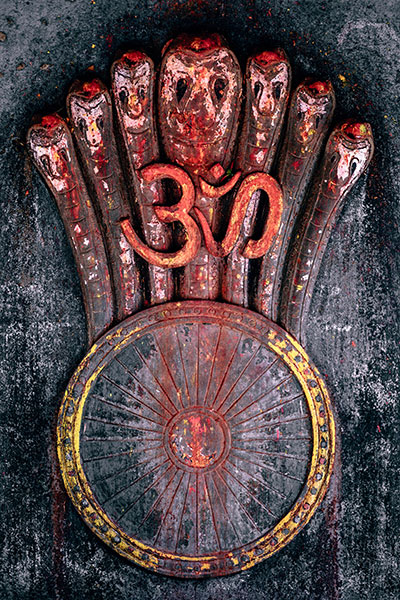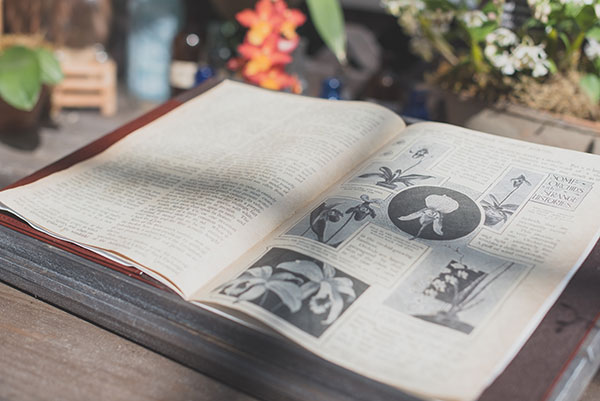Medicine is as old as life itself. The survival of the species demands that with the appearance of disease, living things must also have evolved the means to combat disease. Animals are guided by instinct to seek remedies for illness in plants and herbs. Man with his superior intelligence must necessarily have extended the scope of this search for remedies.
Every human society has developed a rudimentary system of medicine, whether based on material medica or in spells, incantations magic and rituals, which to us in this advanced age may appear meaningless. The progress from this primitive stage to a regular system of medicine has not been the same everywhere. The development of a system of medicine depends on various factors; its form and content are decided by the civilization and the environment in which it is born. Ayurveda is the system of medicine that evolved in India and has survived as a distinct entity from remote antiquity to present day.
It would be interesting to study the history of Ayurveda, trace its origin along with other Indian sciences and thoughts to assess its achievement and its place in the corpus of world medicine. The study of the genesis and evolution of ideas in any science is always interesting and often instructive. But it is not solely as an intellectual exercise that the study of Ayurveda is to be viewed. In spite of the spectacular results achieved by modern medicine, mainly through advances in the physical, chemical and natural sciences, there are vast areas of diseases which have eluded its therapeutic ambit and the study of a system of medicine that has stood the test of time may have a fruitful contribution to make in the overall alleviation of human suffering.
All primitive societies have had a collection of remedies for common illnesses, evolved through trial and error, accident or by inspiration. But such remedies were purely empirical, and not based on any logical understandings of illness or of drugs. As late as the 17th Century, Moliere, referred to physicians as people, “who poured medicines of which they know little into bodies of which they know less”. The Indian system of medicine, Ayurveda, was evolved as a system with a rational and logical foundation. That its basic concepts were not re-examined in the light of the greater understandings of the human environment, that for centuries its methods of treatment underwent little change, and that there have been no addition to its literature for a long time, are charges made against the system by its critics.

It has to be admitted that after the 8th century A.D no book on Ayurveda of any outstanding merit was written and the literature from then on upto about the 16th Century consisted mainly of commentaries on the original texts. One of the last original books was Bhava Prakash, which is about 400 years old.
The fundamentals on which the Ayurvedic system of medicine is based are essentially true for all times and do not change from age to age. These fundamentals are based on human factors and intrinsic causes, not extrinsic causes. Civilization may change, human habits may change, the environment may change but humanity remains the same. Changes in the environment, new modes of living, new avocations, all might contribute to certain modifications of a disease or the appearance of new diseases. But disease attacks the human body, and as long as the human being is very much the same as his ancestor, the reactions to the disease, signs and symptoms would be same. The methods adopted to cure the disease may differ in their form but not in their essential approach.
It is said that the originators of the Ayurvedic system of medicine did not base their practices on the experimental method. By this it is meant that there is no record of studies in anatomy, physiology, pathology and pharmacology and as such the criticism is not without meaning. But the development of surgery, the classifications of disease, the observations on signs and symptoms, prognosis and the descriptions of the nature, toxicity and the therapeutic value of drugs as described in the literature, all clearly demonstrate a high level of knowledge. This would not have been possible without the scientific approach.
One thing we should not lose sight of is the fact that the men who gave the system to the world were drawn from the highest intellectual and spiritual hierarchy. Their motive was compassion. Their purpose was to alleviate human suffering and their recorded precepts were for their disciples whom they trained for the service of humanity. The emphasis therefore in the texts is on the practical aspects of medicine. It is also possible that these great seers, through the practice of Yogic disciplines, were endowed with the faculty of intuition which helped them to discover many truths.

Students of chemistry will be familiar with the famous observation “Let us learn to dream; then perhaps we shall learn the truth”. We see that the experimental method has serious limitations, especially in the world of medicine. A medical journal from thirty years ago, looks outdated and obsolete today. The so-called truths or findings given to the world yesterday with a wealth of experimental findings and statistical figures is controverted today with evidence which is no less impressive. While we should all believe in progress, we should fight the temptations to look on mere newness as a virtue. Nor should we under-estimate the contributions made to human knowledge by seers endowed with intuition or some indefinable faculty that has enabled them to perceive the truth far ahead of their time.
Medicine in the Vedas and Puranas:
References to medicine are found in the earliest texts including the Vedas. The legendary version of the origin of the Ayurvedic system is that Brahma reminded it to Prajapati, who handed it down to Atreya Punarvasu and so on. In the Rig Veda there are references to the first divine physician, Rudra and of how the Aswini Kumaras cured Chyavana of senility. There are a number of Riks addressed to Marut, Vayu etc, in which the reference to medicine is unmistakable. Although such references are found in the Rig Veda, systematic and comprehensive treatment of medicine is to be found only in the Atharva Veda. The Atharva Veda is considered to have originated later than the Rig Veda, and contains a description of diseases and their cure.
As an example, we might cite the ancient view of the disease consumption. It was characterized as a disease of not one organ but of several organs the heart, lungs, spleen, intestines, rectum and even the bones and marrow. This surprisingly modern view appears in the form of a prayer – the form in which medical instruction appear in Vedic literature. An even greater degree of anatomical and other knowledge is displayed in the Upanishads – particularly in the Yogapanishads, which of course belong to a later period than the Vedas. The tradition of medical knowledge is further carried during the period of the puranas. References to drugs, diseases and health care are to be found in the epics. Thus we see in the Ramayana, that expert physicians attended on kings and they were capable of preserving dead bodies. In the Mahabharatha there are references to surgeons attending to the wounded and the disabled with appliances and equipment in the battle field.
Beginnings of a Systematic Development:
We shall next consider the period when systematic development is said to have taken place. This era is associated with a few illustrious names, the first of whom is Agnivesa. The Samhita written by him which is classic which has survived to this day has been made available to the world by Caraka, a redactor. Historically it would appear that during Caraka’s time the Agnivesa Samhita had fallen into disuse or partly perished, and Caraka undertook the great task of restoring the work, filing in the gaps and re-writing the parts of work which had become obscure.

This is evident from the subscription to each chapter in which the author states that he has redone the chapter (Pratisamakrita). The work has undergone a further revision by Dridabala. At least the last 17 chapters devoted to Cikitsa and the whole Kalpa and Siddhi stanas have been re-written by Dridabala as stated in the colophon of each chapter. Caraka Samhita: It is not known when Agnivesa lived. The book is written partly in verse and partly in prose and the language bears a resemblance to that of the Brahmanas. The text is the record of teaching by Atreya Punarvasu to his students – Agnivesa being of them.
Caraka is believed to have flourished in the sixth century B.C. There is a Hindu tradition that Caraka and author of Mahabhasya on vyakarana patanjali, are one and the same person. Many commentators, Vijnana Bhiksu, Sivadasa and Bhavamisra, (the author of the Bhavaprakasa) to name a few, subscribe to this opinion. The student of early Sanskrit literature is often confronted with some confusion in the identity of names owing to their imprecise use by commentators. It has to be admitted that there is some uncertainty about the identity of Caraka. This however does not in any manner, detract from the greatness of Caraka Samhita. The popularity of the work continues to this day. No Ayurvedic physician of any repute would admit that he has not studied Caraka.
The work is a complete compendium of medical information, dealing with medical aspects, as etiology, symptomatology, treatment and medical care in health and in disease. Susruta samhita: Equal in importance to the Caraka Samhita is another treatise called Susruta Samhita. This work deals with surgical diseases, and diseases of special organs such as the eye and ear. By tradition Caraka Samhita is ascribed to Atreya Punarvasu.
Susruta Samhita is ascribed to Dhanvantari. Susruta has recorded the precepts of this puranic personage Dhanvantari, just as Agnivesa has recorded those of Atreya Punarvasu. The Dhanvantari of puranas is said to be one of the avatars of Vishnu. A historical personage by the name of Divodasa is also known as Dhanvantari, being an incarnation of Dhanvantari of Puranas. It is more likely that the name of Dhanvantari was given to Divodasa of Kasi who was a celebrated physician. Susruta Samhita like the Samhita of Agnivesa, has undergone recensions.
It is generally believed that the famous rasarcharya, Nagarjuna, re-edited the book and that the Utterasthana, the last portion of the book, was completely written by him. This theory is based on Dalhana’s statement in his commentary that Nagarjuna reedited (Pratisamskarna). There is also an ambiguous reference from which some critics have inferred that originally Susruta samhita consisted of only five cantos, and the sixth is a later addition. While enumerating the contents of the chapters and the cantos, Susruta mentions only 120 chapters in 5 cantos. There is no reason why he should have restricted himself to these numbers if the work really consisted of 180 chapters in 6 cantos. The 66 chapters in Uttarasthana are therefore evidently later additions by another author just as the last 17 chapters of Caraka samhita are additions by Dridhabala.
That the work was intended to be a inclusion of medical diseases would appear to be inconsistent with this purpose. It is true that in ancient systems of medicine, surgical and medical diseases were not divided into water-tight compartments, as they are today. All the same, there was some specialization. Caraka remarks in many places; “Hereafter, hand the patient over to the Surgeons”. It is therefore quite possible that the sixth canto, which deals mainly with medical diseases and diseases of the eye, was not the work of Susruta, but was added to the Samhita by Nagarjuna. When Susruta lived is not known. It is generally believed that Susruta lived sometime around 600 B.C. Susruta Samhita could have undergone several revisions, the last of which was attributed to Nagarjuna Rajatarangini which places him in the 3rd century B.C. The identity of Nagarjuna is also shrouded in antiquity. There appears to have been a number of physicians and alchemists with the name Nagaruna.
Astanga Samgraha and Astanga Hridaya
Next in the chronological order is another classical work, Vagbhata’s Ashtanga Samgraha. Vaghbeta probably belonged to the second century A.D. He has summarized both Caraka and Susruta and brought both medical and surgical diseases within the compass of a single treatise.
Vagbheta follows the tradition of using both prose and verse, though there is more verse than prose in his work. From the stand point of analytical classification arrangement and exposition he excels over other writers. The Astanga samgraha is for this reason more popular than other works among students and practitioners in the South. Vagbheta can claim to be the first author to have begun the syncretic school of bringing together information on all the branches of medicines within the ambit of a single work which as others he divided into eight parts (Astanga), and called it as such. The eight parts are general medicines, paediatrics, mental diseases, diseases of special sense organs, surgery, toxicology, gerontology and aphrodisiacs. Ayurveda is the only ancient science where care of ole is described.
There is another important work, similar in the name and content called Astanga Hridaya. It is written entirely in verse and its author also bears the name Vaghbeta. The opinion is held by many that, both Astanga Samgraha and Astanga Hridaya are the work of one and the same person. The method of presentation, the classification of the subject under various chapters and even many of the Slokas are so strikingly similar in both works, that this view may be correct. After completing the first work, Samgraha the author must have summarized it in verse form and given it the name Hridaya. There are opinions about the superiority of the book Astanga Hridaya over most other treatises. Brevity and clarity of expression are the hallmark of this work.
Bhela Samita: Among the works of great aniquity is the Bhela Samhita. The main point of interest about this work is that is was probably written by a contemporary of Agnivesa. It is modeled on the Agnivesa Samhita.
Another book which has been published is Harita Samhita, which is claimed to have been written by one Harita, another contemporary of Agnivesa. The claim is incorrect as this Harita probably belongs to later times.
Other Works: Of lesser caliber than Caraka, Susruta and Vagbheta, but no less worthy of attention to students of Ayurvedic medicine are Madhavakara, Cakra Data, Sarngadhrara and Bhav Misra. Madhavakara (8th Century A.D.) comes first in chronological order. He has written Nidana which deals with aetiology, diagnosis, pathology and prognosis of diseases. The work is not original but a compilation from various earlier texts. Its chief virtue is comprehensiveness. Brndamadhava is a treatise on medicine (Brnda being the real name of the author) which contains a number of Siddha yogas or prescriptions which have been tried and found useful. Chakrapanidatta is well-known as a brilliant commentator of both Caraka Samhita and portions of Susruta Samhita or Cikitsa Sara Samgraha. It is a treatise on treatment which is widely read even to this day. He has also written a book on material medica with the title Dravya Guna Samgraha Cakrapaidatta which belongs to the middle of the 11th Century A.D. Cakrasadatta Samhita follows the order of Madhava Nidana and Brndamadava. The Cikitsa Sara Samgraha and the Dravya Guna Samgraha have been the subject matter of brilliant commentaries by the gifted author Sivadasa Sena, who has clarified many abstruse passages in the texts. Sarangadhara, who flourished in the 11th Century A.D, has also written a Samhita. It contains a number of useful prescriptions and is very popular among practitioners all over the country for its valuable definitions of technical terms, called paribhasa.
(To be continued…)


















 Other
Other